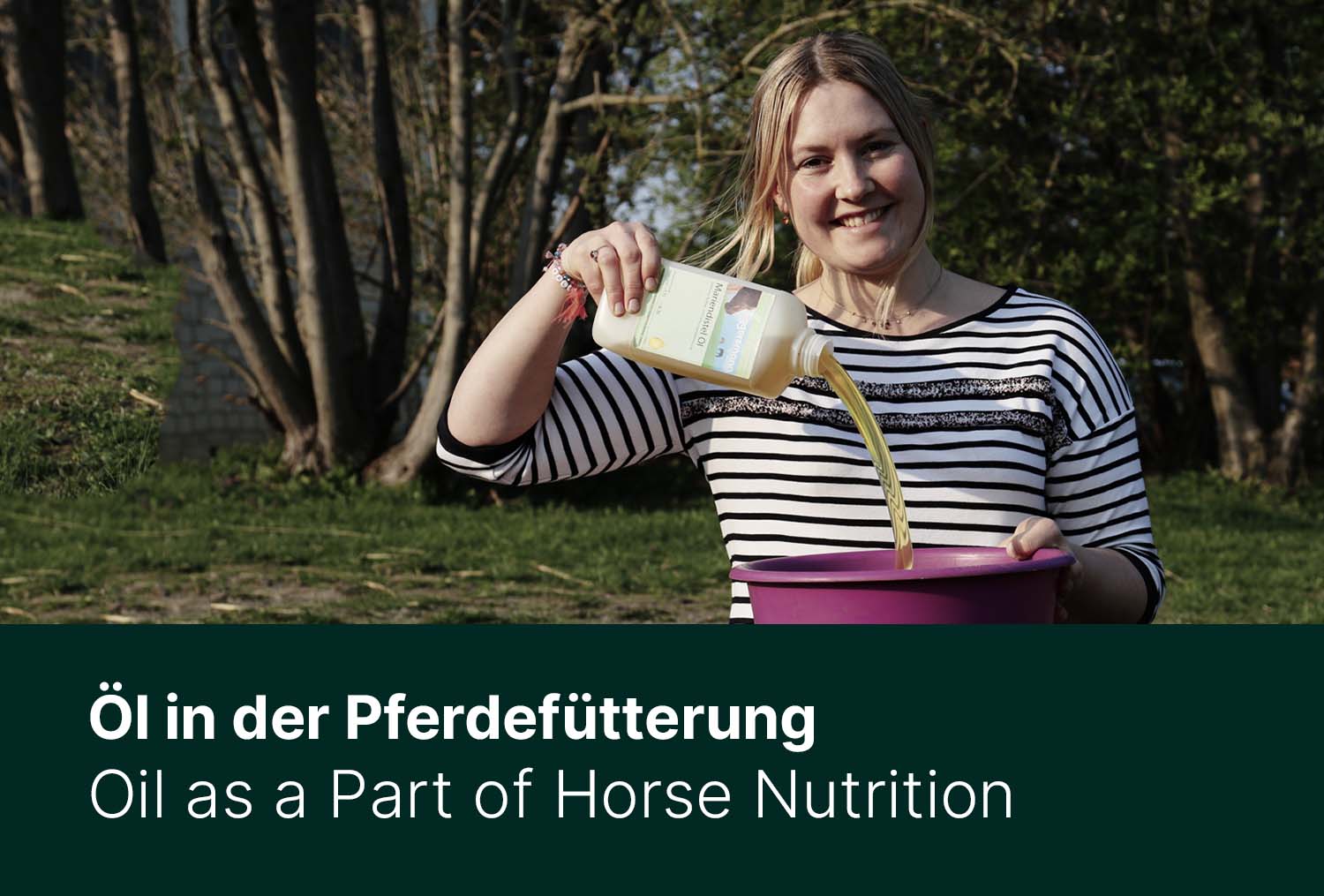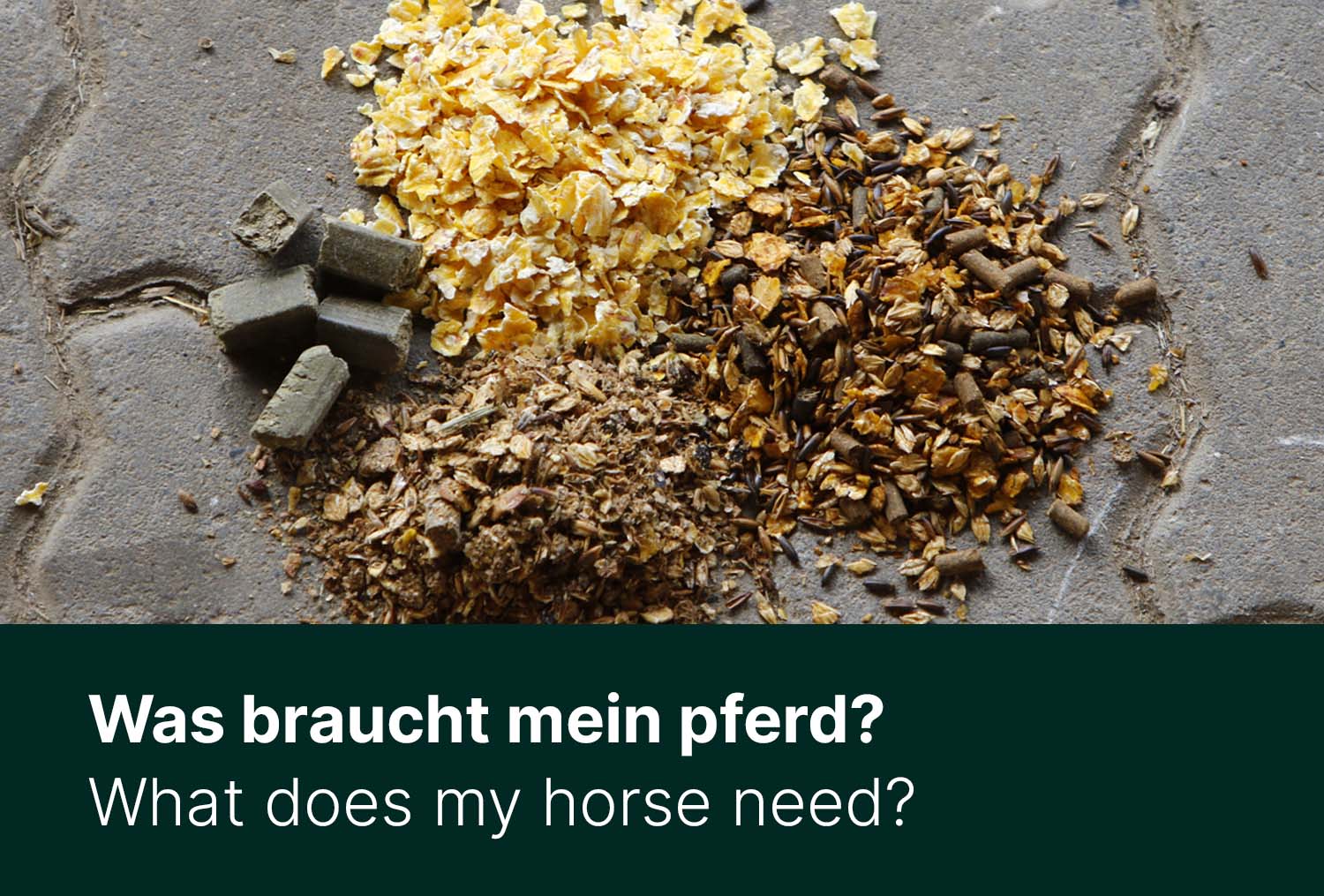The addition of oil has become as common in horse feeding as mash: whether as an energy supplier, for a shiny coat or as a support during the change of coat. We will explain which oils are particularly suitable and why in this post.
Oils have become an essential part of horse feeding. In contrast to cereal feeding, the addition of oils is still quite new. Almost in every barn you can see the canisters and bottles - you can find them all starting with the ordinary sunflower oil out of the supermarket till the black cumin oil. But oil is not solely oil. There are some fundamental aspects to consider when choosing oil.
Why oil?
Basically, oil serves primarily as an energy supplier. On the other hand, certain fatty acids are equally essential for the functioning of the digestive tract. However, the additional administration of oils is still quite new, as the horses can also extract the vital oils from the grain of the concentrated feed and from grass. Through the green fodder, the horse usually ingests omega-3 fatty acids. Omega-3 fatty acids are among the essential fatty acids, which means that the horse can not produce them and must therefore absorb them through their diet. For example, the concentration of oils in oats is 5%. This equals about 100 milliliters of oil for a 2 kilogram daily intake. In comparison, barley provides significantly less oil. However, the oil that the horse can pull out of concentrated feed, is omega-6 fatty acids. In order to obtain a favourable effect on digestion, omega-3 fatty acids and omega-6 fatty acids must balance each other out. Especially for horses that do not have the opportunity for regular grazing, an additional dose of high-quality oils is highly recommended. In order to digest oils reasonably, the horse has to produce more bile, which in turn attacks the delicate mucous membrane of the digestive organs in horses with a sensitive stomach and intestines. Thus, the pros and cons of oil feeding come from a variety of factors and should not be administered careless and without the veterinarian's agreement - depending on need, disease and performance, various oils may be suitable.


Long-chain, short-chain, polyunsaturated? - What does my horse really need?
To answer this question, a little digression into biochemistry is essential. Oils are made of the molecule glycerine. The fatty acids attach to this and can vary in length. This also the terminology for short-chain and long-chain fatty acids. Another aspect is the saturation of fatty acids, which are differentiated into saturated, monounsaturated and polyunsaturated fatty acids. The benefit of the individual oils results from the particular composition of the fatty acids. From a nutritional point of view, polyunsaturated fatty acids, such as omega-3 fatty acids, are particularly important for the horse.
- Linseed Oil
LLinseed oil has a 50% share of omega-3 fatty acids and is therefore particularly suitable as a compensation for horses that can not get into the daily enjoyment of fresh grass. Especially over the winter, a feeding of essential oils is recommended.
- Corn Oil
The proportion of omega-6 fatty acids in corn oil is over 50%, while the proportion of omega-3 fatty acids is dwindling. The omega-6 fatty acids are just as essential as the other fatty acids. However, the merit of these fatty acids comes from the interaction with omega-3 fatty acids. Corn oil, in addition to the fatty acids also containts the important vitamin E, which in turn protects the sensitive fatty acids (which pulls the horse out of the grass, for example) from spoiling and thus supports the crucial interaction of different fatty acids.
- Milk Thistel Oil
Also, the seeds of milk thistel contain a lot of omega-3 fatty acids. The glycogen storage of the horse is replenished quickly without increasing the blood sugar level. In addition, the milk thistle oil has a high natural content of vitamins and minerals.
- Sunflower, Rapeseed and Soybean Oil
Sunflower, rapeseed and soybean oil have an even higher proportion of omega-6 fatty acids and are therefore rather unsuitable for horse feeding. Also, if these oils can be purchased relatively cheap and easy in the supermarket, it is advisable to resort to the richer oils to actually achieve the desired positive influence.



Benefits in Horse Feeding
In addition to the nutritional benefits for the horses, there is also a benefit in terms of performance and energy. The feeding of oils provides the horse with quickly digestible energy on the one hand and, on the other hand, does not increase the protein content of the feed. Furthermore, the oil lowers the glycemic index of a feed ration. This means that during the feeding with oil, the glucose and insulin levels in the blood hardly increases - oil supplies energy but the blood sugar levels doesn't rise. This aspect is equally appealing for metabolically ill horses (EMS, ECS, laminitis, etc.).
The use of oils is also recommended in sports applications, as the added energy saves muscle glycogen, thereby counteracting the premature fatigue of the muscles.
Even during the change of coat, oil is awarded a supportive effect. But this is not based on the widespread misconception that oil feeding speeds up or simplifies the change of coat but results from the surplus energy. The coat change is an energy-consuming time for the horse - whether noticeable in performance or not. The addition of oil provides the horse with additional energy, which counteracts a drop in performance. Furthermore, oils possess a favourable effect on the fur metabolism of the horse, which ultimately strengthens the skin barrier against harmful external influences is strengthened.











How to clean your grooming kit properly
Horse Care during summer - Beware of the heat